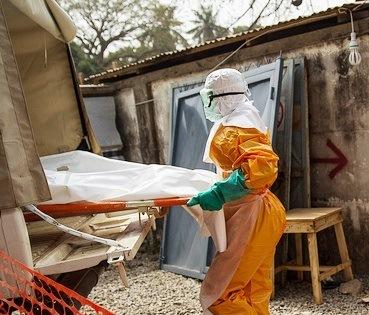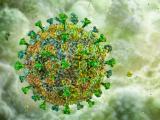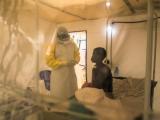Continued unsafe burials are largely fueling Ebola flare-ups in Guinea and Sierra Leone, where 35 cases were reported last week, just days after the countries had seen their lowest weekly case tallies of the year, according to outbreak updates today.
The geographic range of cases also expanded amid the rise in cases, which the World Health Organization (WHO) today said was substantial. The number of new cases reflects the region's highest weekly total in the past month.
Top outbreak response officials have warned that the end of the outbreak could be long and bumpy, and the WHO hinted last week that response indicators in Guinea were shaky and that cases might increase and expand in the weeks ahead. Guinea has had several flare-ups and declines over the course of the outbreak.
Overall, the WHO said the outbreak total in the affected region has reached 26,933 confirmed, probable, and suspected cases, including 11,120 deaths.
Ramped-up response in Guinea
The developments triggered an urgent mission to Guinea yesterday by response partners, amid fears that the spike in cases could spread to neighboring countries, especially Guinea-Bissau, which borders Guinea's Boke district in the northwestern part of the country, one of the newly emerging hot spots, according to a statement today from the United Nations Mission for Ebola Emergency Response (UNMEER).
Fatoumata Lejeune, UNMEER spokeswoman, said in the statement that after making progress toward getting to zero, the new uptick in cases is disappointing. "But we're all keeping the faith, and taking the steps we need to make sure we deal with this as quickly as possible, and to help Guinea get on the path to recovery.
UNMEER said local flare-ups, much of them linked to unsafe burials, are occurring across the region as the epidemic winds down and that each one prompts a robust response.
The WHO said the tightly clustered cases in Boke are located in the Kamsar subdistrict, and investigators suspect that they are linked to a transmission chain in Conakry.
The nearby port city of Kamsar is home to a significant bauxite mining industry, and the spread of Ebola in the area could damage the region's economy, UNMEER said, adding that a coordination office will be opened in the area to support a similar Boke regional office.
Response partners and local teams will reinforce measures such as contact surveillance, early case detection, and social mobilization to tamp down the spurt of cases, according to UNMEER. Another challenge responders face is that the rainy season is now under way in Guinea, which could hamper operations.
Outbreak snapshots
Guinea reported 27 new lab-confirmed cases last week, up sharply from 7 the previous week. Aside from Boke (5), cases were also reported in Dubreka (11) and Forecariah (11) districts. Meanwhile, Sierra Leone reported 8 lab-confirmed cases last week, up from 2 the week before.
Overall, the number of districts in the two countries reporting cases last week doubled, from three to six.
The WHO said all 11 of the cases in Guinea's Dubreka district are from the Tanene subdistrict, and though responders don't know how the cluster originated, they have linked most of the cases to four probable case-patients who attended a funeral of someone who died of a suspected Ebola infection in the middle of April. The WHO added that responders are still having difficulties engaging local communities, which has made investigation and contact tracing a challenge.
Cases in Guinea's Forecariah district are located across 6 of its 10 subdistricts. On May 16 responders launched a 4-day case-finding campaign in the district that targeted 7,000 households.
Exposure sources aren't known for 9 of Guinea's cases, which the WHO said is a sign that transmission chains are still evading detection in several areas.
Sierra Leone's 8 cases are in Freetown (4), Kambia (1), and Port Loko (3). The Freetown cases are all in neighborhoods north of the city near the Moa Wharf area, which was the only part of the country to report cases the previous week. Half of the country's cases last week were detected in known contacts of an earlier case, and upon further investigation, three of the latest cases had links to previous cases, and one was detected in a patient who died in the community setting.
Health worker infections at Freetown clinic
A new infection was reported in a health worker, the first in 5 weeks. The patient is from Sierra Leone and worked at the same facility in Freetown where an Italian health worker was sickened by the virus. The WHO said officials are investigating how the two health workers were exposed to the virus. The latest health worker infection raises the total to 869 cases, including 507 deaths.
The agency added that Italian health officials are monitoring 13 contacts of the Italian health worker, and none were considered to have had high-risk exposure.
Italy's health ministry said yesterday that the condition of the Italian health worker, hospitalized at a high-containment unit in Rome on May 11, is improving and that he has resumed eating, is fever-free, and is almost free of gastrointestinal symptoms, according to a machine translation of an update on the case. The man still has mild respiratory symptoms and is still on antiviral treatment, oral rehydration, and intravenous therapy.
The man's illness was the first Ebola case detected on Italian soil.
See also:
May 20 WHO situation update
May 20 UNMEER statement

















